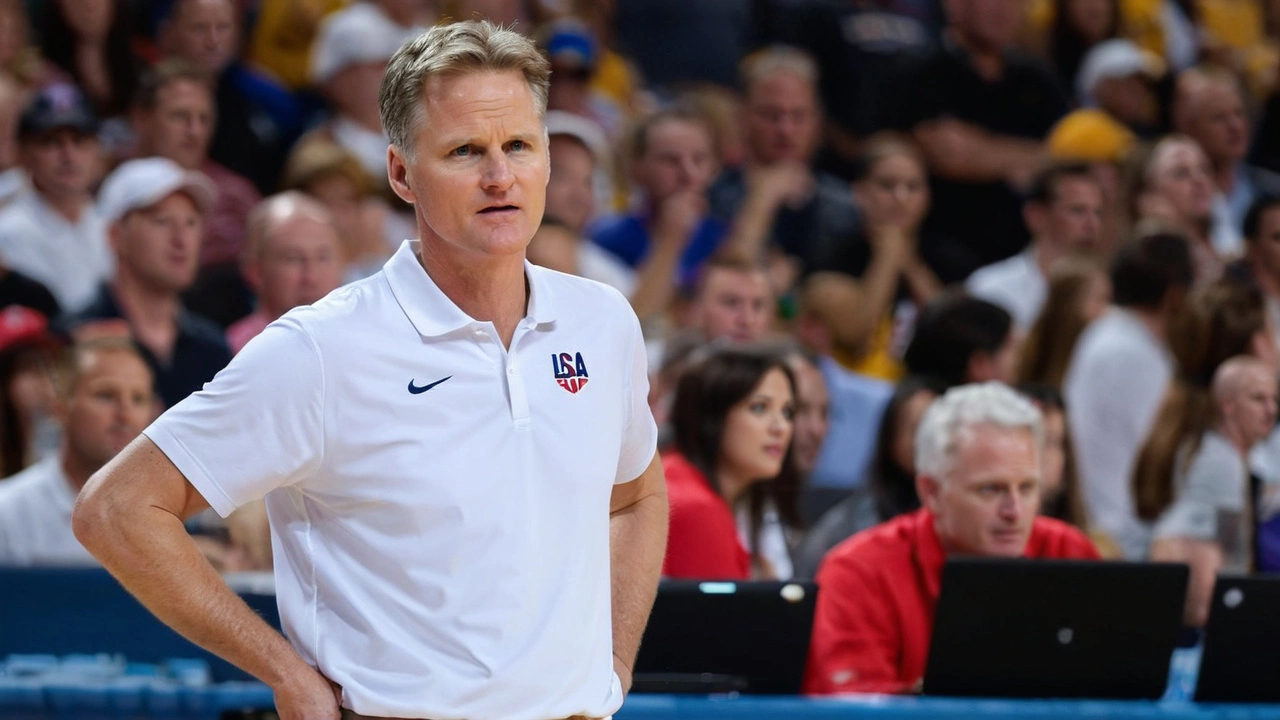
Steve Kerr's Rotational Decisions Redefine Team USA's Strategy at the Paris Olympics
Steve Kerr has earned a reputation for his dynamic leadership and strategic prowess, attributes he brings to his role as head coach of Team USA during the 2024 Paris Olympics. Under his guidance, the team has maintained an impeccable 7-0 record, including a flawless 2-0 start in the Olympic games. Nevertheless, Kerr's approach has raised eyebrows, primarily due to his frequent changes to the starting lineup. In just seven games, Kerr has already used four distinct starting lineups.
The Core Players
Among the varied lineups, a few players have remained consistently significant on the court. Stephen Curry and LeBron James have been mainstays, lending stability and experience to the team. Meanwhile, Devin Booker and Jrue Holiday have started in five of the seven games. The only shakeup came when Joel Embiid, who started in the team's first six games, was benched for the match against South Sudan in favor of another lineup choice.
Situational Lineup Choices
Kerr's decisions often reflect his adaptability and keen eye for exploiting the opponents' weaknesses. For example, against South Sudan—touted as the fastest team in the tournament—Kerr tweaked his lineup for optimal agility and speed. Jayson Tatum, for instance, found his way back into the starting five after previously being benched. These changes underscore Kerr's commitment to maximizing the effectiveness of each matchup.
The Bench's Strength
While the starting lineup has seen frequent changes, the bench players have proven to be equally crucial. Anthony Davis and Bam Adebayo form a formidable frontcourt, showcasing depth that hints at Kerr's broader strategy. The question that looms large is whether Kerr will settle on a consistent starting lineup as the tournament progresses towards its climax.
Player Commitment and Chemistry
Despite the revolving door of starting lineups, Kerr emphasizes that the players have remained professional and committed to the collective goal. He believes that the focus on teamwork and winning surpasses individual starting roles. However, as the team heads into more challenging matchups in the knockout stages, the chemistry on the court could come under scrutiny. Will the constant flux impact the team's performance when it matters the most?
The Durant Question
A significant subplot to Kerr's rotational choices revolves around Kevin Durant. Having been sidelined with a calf injury, Durant's potential return to the starting lineup will be critical. His caliber and experience can offer Team USA an edge, but integrating him back into the team might also require more adjustments. Kerr's approach suggests he's using the group stage as an experimental phase to finalize the most effective combinations for the knockout rounds.
The Road Ahead
Looking forward, Team USA will encounter tougher opponents in the knockout stage, making Kerr's experimental approach in the group stages a double-edged sword. While it offers the chance to find the optimal lineup, it also risks affecting the team's momentum and chemistry. However, with their depth and talent, Team USA remains a formidable contender, irrespective of the starting lineup. Kerr's ability to navigate these changes successfully will be a litmus test for his coaching acumen and the team's adaptability.
As the tournament continues, fans and analysts alike will be keenly observing whether Kerr's gamble of changing strategies will pay off. The ultimate aim is clear: to bring home the gold, regardless of who starts the game or finishes it. Only time will tell if Kerr's dynamic approach to team management will lead Team USA to Olympic glory.
Write a comment